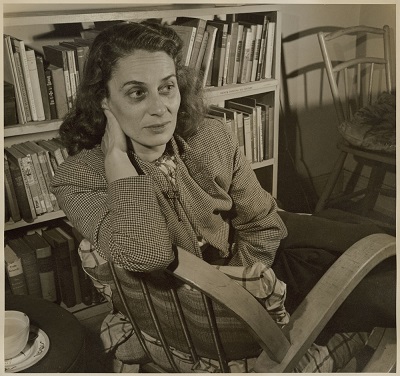Roy, Gabrielle National Historic Person
St. Boniface, Manitoba

Gabrielle Roy, 1946
(© Bibliothèque et Archives Canada | Library and Archives Canada / Ronny Jaques)
Address :
375 Deschambault Street, St. Boniface, Manitoba
Recognition Statute:
Historic Sites and Monuments Act (R.S.C., 1985, c. H-4)
Designation Date:
2009-03-28
Life Date:
1909 to 1983
Other Name(s):
-
Gabrielle Roy
(Designation Name)
Research Report Number:
2008-029, 2008-SDC-CED-029
Importance:
Her mastery of the art of story-telling, her profound humanity, and her limpid prose have assured her an enduring place in the literary landscape
Plaque(s)
Existing plaque: Parc du Bonheur D'occasion - 506 Rose de Lima Street, Montréal, Quebec
Gabrielle Roy distinguished herself as a pioneer of social realism in Quebec with the publication of her first novel, The Tin Flute (1945). Inspired by the impoverished neighbourhood of Saint-Henri, it presented a harshly realistic picture of the lives of many urban French Canadians. Her subsequent works sensitively explored universal themes through descriptions of the immigrant experience and her years in Manitoba’s Francophone community. Roy’s masterful storytelling, clear prose, and profound humanity have assured her an enduring place in the Canadian literary landscape.
Existing plaque: 375 Deschambault Street, St. Boniface, Manitoba
Gabrielle Roy's first novel, The Tin Flute (1945), brought her immediate recognition as an important writer and a pioneer of social realism in Quebec. Subsequent works sensitively explored universal themes through descriptions of the immigrant experience and her years in the Franco-Manitoban community, establishing her reputation for masterful storytelling, clear prose, and a profound humanity. All her life, Roy remained attached to this simple, welcoming family home – a typical middle-class residence built in 1905 – where she was born and lived until 1937. With its vibrant world of people and events, this house, now a national historic site, was often described and idealized in her writing, especially in Street of Riches (1955).